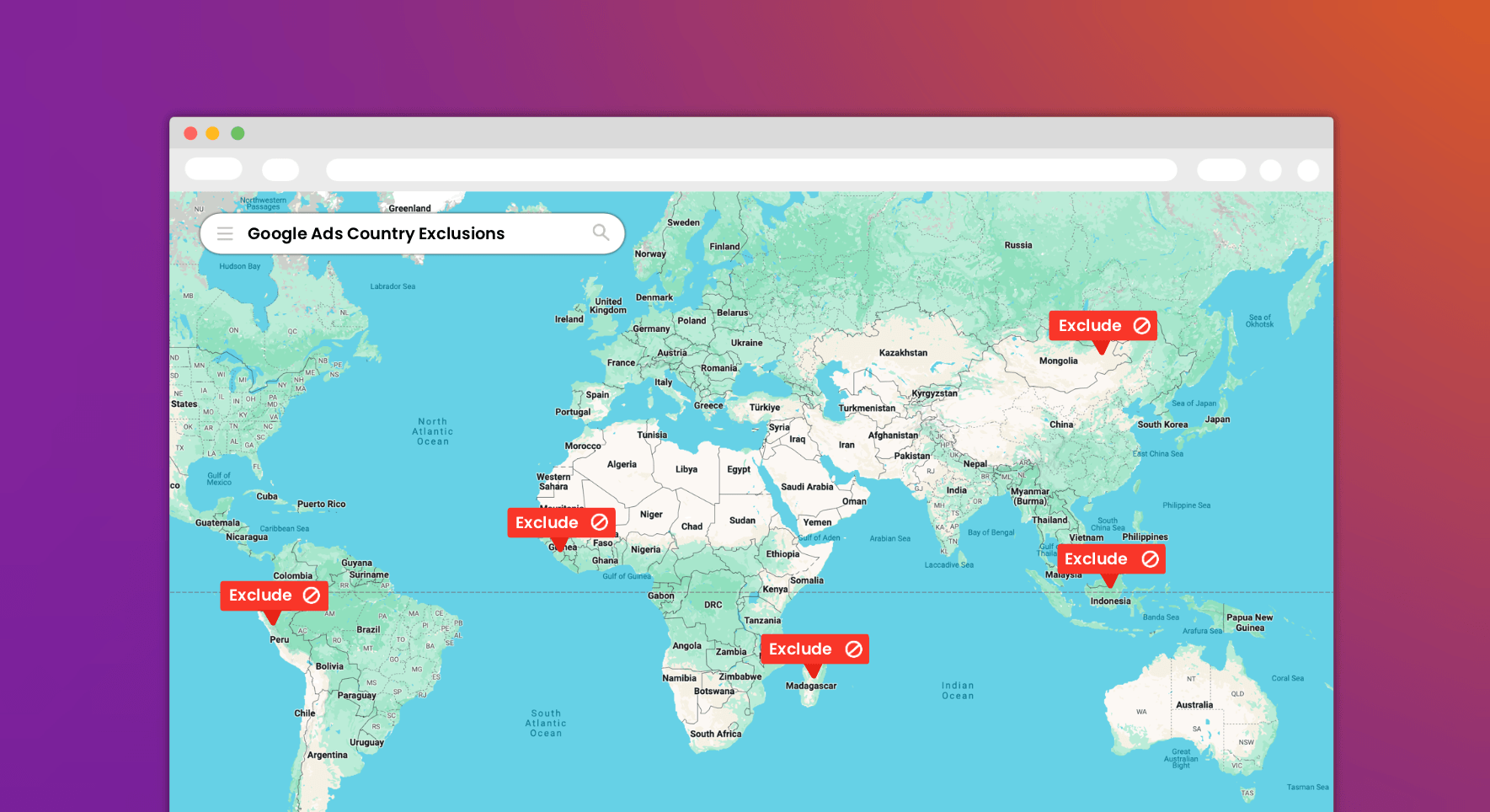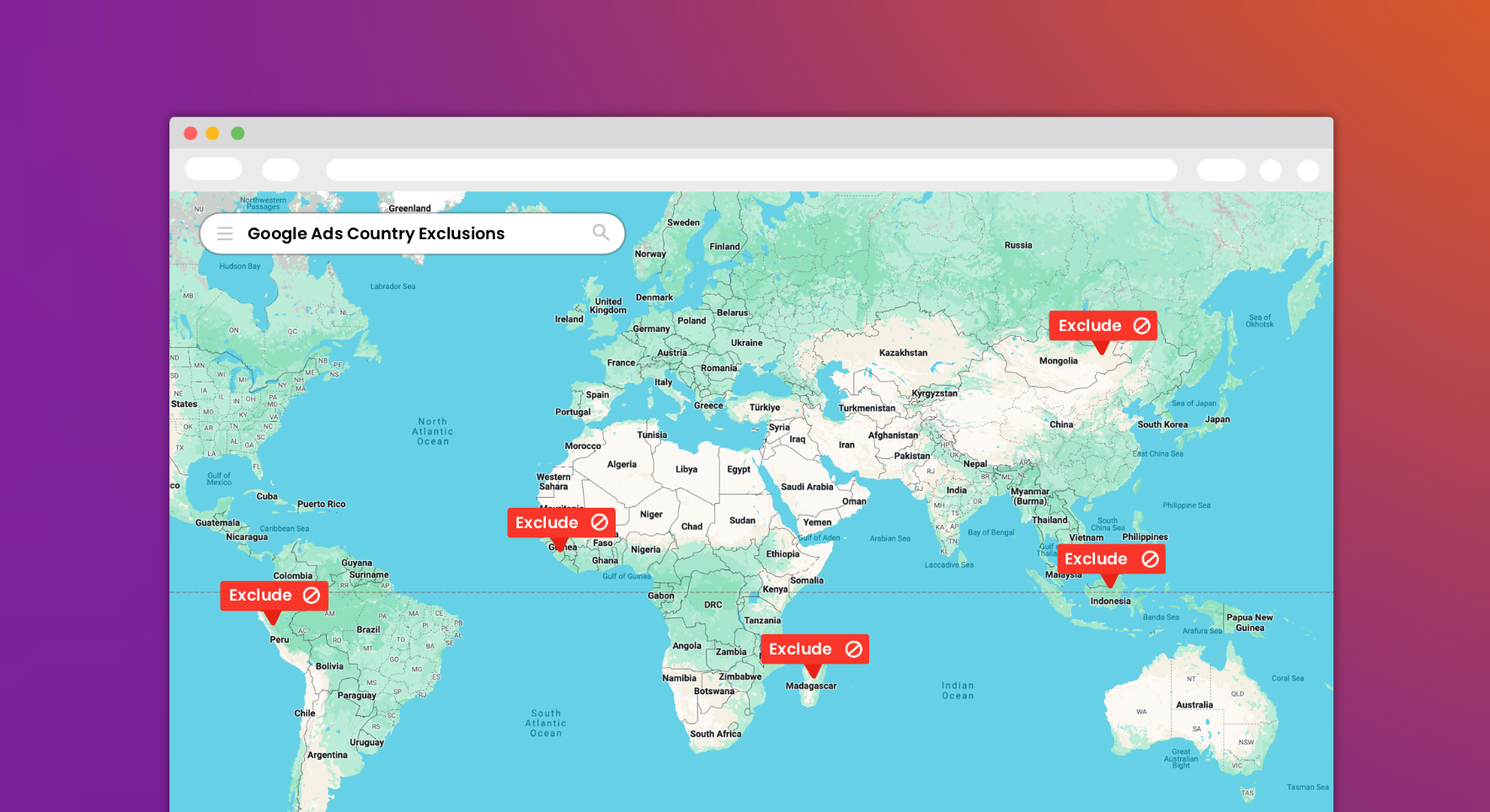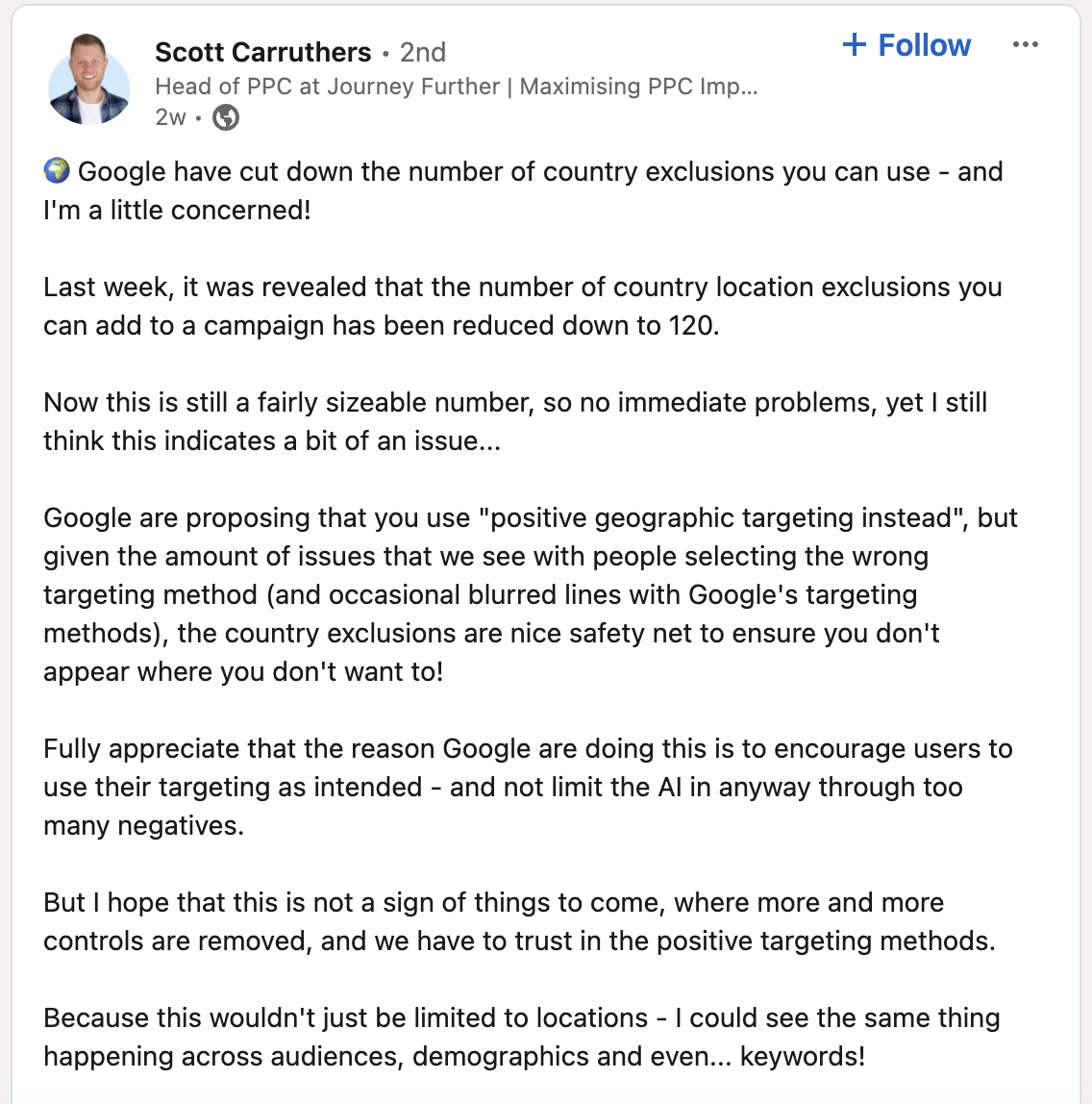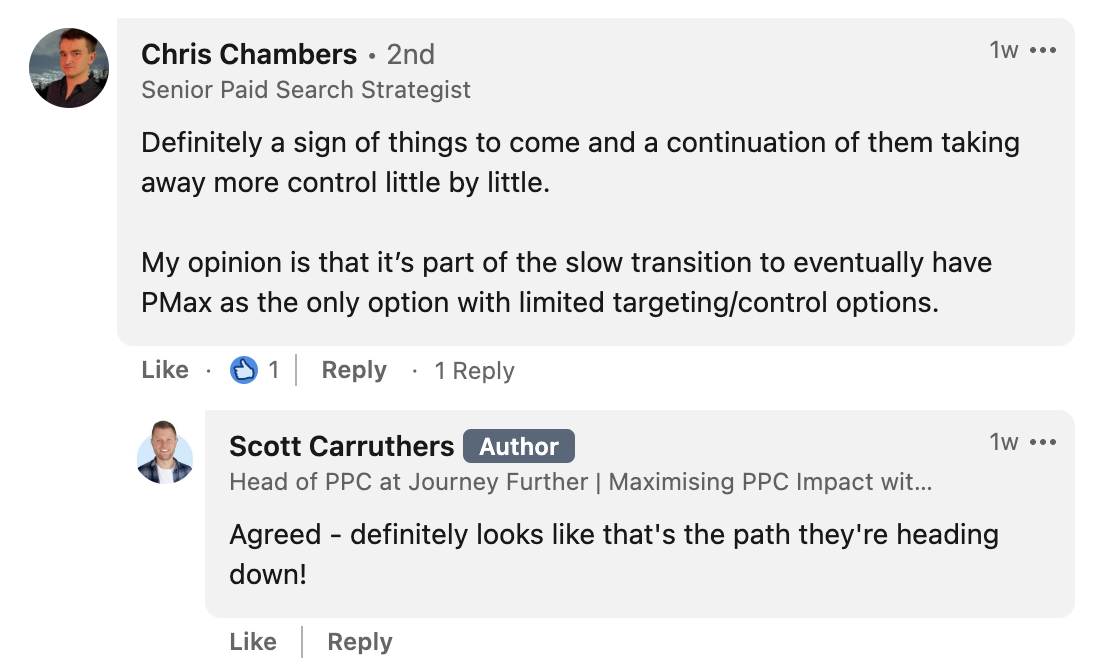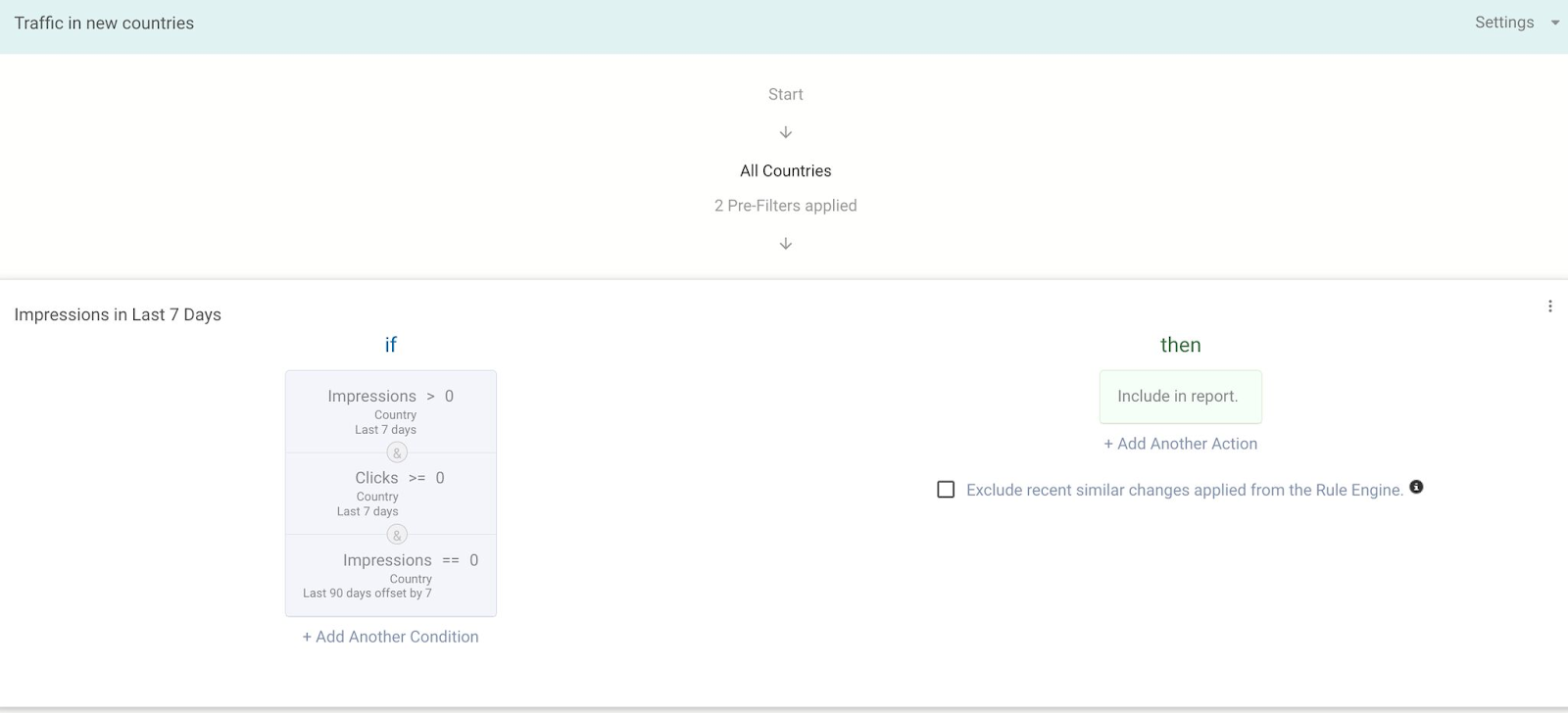Google has recently reduced the number of country-level exclusions that can be placed on ad campaigns to 120, affecting marketers currently using a long list of countries to exclude from Google Ads on new campaigns.
The new restriction is intended to streamline location targeting workflows, and prevent marketers from using a blanket-exclusion approach when it comes to geo-targeting. Instead, Google is promoting a positive-targeting first approach, stating that this should not impact campaign performance.
Google Ads is currently available in 195 countries, and before the change marketers could exclude as many of these countries as they deemed necessary.
Going forward, any new campaigns with more than 120 country-level exclusions will receive the following warning notification if this limit is exceeded:
So what does this mean for marketers? As ad budgets are tightened and expectations grow, should we now be concerned about the potential for unwanted geographic audiences to view ads and waste ad spend?
Here, you’ll find everything you need to know about country location exclusions and the new 120-country limit, including:
- A quick recap of country location exclusions
- Why country location exclusions are vital for most ad campaigns
- A discussion around the impact these changes could have going forward
- Actionable steps you can take to help negate any impact from this change, and maximize the efficacy of your geotargeting.
What Are Country Location Exclusions?
In order to sell your product or service effectively, it’s important to set parameters on where your ads are shown. Yet Google’s own ad guidelines state that it’s just as important to set parameters on where your ads aren’t shown.
Country location exclusions can be set on each campaign you run, and a carefully selected list of countries to exclude from Google Ads can prevent your ads from appearing in regions you don’t want them to.
Why Country Location Exclusions Are Important
In short, country location exclusions are designed to prevent you from wasting ad spend on locations where your product or service isn’t available, relevant, or required.
Even if your product or service is globally available, you may want to use country location exclusions to:
- Run a campaign targeting countries that are more likely to convert
- Run a brand or product awareness campaign in new markets
- Act as a ‘safety net’ to help prevent ads being shown outside of your geo-targeting areas
Advertise to Humans, Not Bots
Save up to 20% of your advertising budget by automatically eliminating fake ad clicks across all paid channels.
What Do the Country Location Exclusion Changes Mean for Marketers
Marketers have always used country location exclusions to prevent their ads from appearing in certain locations. As such, marketers might have pre-existing country location exclusion lists containing all countries except the one they’re targeting, which are no longer usable in new ad campaigns.
A 120-country limit on location exclusions means that going forward, marketers are going to have to restructure their campaigns to ensure their products are appearing in the right places. Those with extensive exclusion lists will find themselves needing to prioritize certain country exclusions over others in the coming months.
What Marketers Are Saying
Of course, 120 is still a substantial number, so we’re not expecting a tsunami of issues or complete campaign overhauls to come rolling in off the back of this change. Country level exclusions will continue to exist – and according to Google, positive geo-targeting is just as effective as negative geo-targeting.
However, the change does have some marketers concerned about potential implications for the future, with many being skeptical about the idea of having further control over their ad campaigns taken away from them.
What Google Are Saying
Despite the initial skepticism from marketers, Google remains firm in their approach and reinforces the idea that positive targeting provides a better workflow for advertisers – without any performance drawbacks.
When initially questioned about the aforementioned error notification that appeared upon exceeding 120 country location exclusions, Ginny Marvin (Ads Product Liaison at Google) said the following:
You will see this notification if you try to add more than approximately 120 country level location exclusions. The aim is to simplify location targeting workflows, and we recommend using positive geographic targeting instead.
Ginny went on to reassure marketers that the limitation has been implemented to promote a positive targeting-first approach, and that location exclusions won’t be going away anytime soon:
Location exclusions aren’t going away & we know they are important. But advertisers should not have to use a blanket exclusion approach, and using a positive targeting-first approach should not impact performance.
Furthermore, Google’s geolocation exclusion guide article states that country location exclusion isn’t required when you’re using positive geographic targeting:
There’s no need to exclude areas that you haven’t already targeted — your ads won’t be shown in places unless you explicitly target them.
Positive Geographic Targeting
Whilst the new limit affects the amount of places you can’t target, there’s no changes to positive geographic targeting – or in other words, exclusively targeting the places where your product or service is relevant, rather than excluding places where it isn’t.
The intent of positive geographic targeting (or ‘geo-targeting’) is to exclusively target people in locations where they’re most likely to convert.
With Google pushing positive geographic targeting as the de-facto method of ad geo-targeting going forward, it’s worth ensuring your knowledge of geo-targeting is fully up to scratch.
Google is constantly working to make geo-targeting as accurate as possible, so ad campaigns that actively target a country shouldn’t perform much differently from similar campaigns that exclude a large list of countries.
Despite this, it’s worth keeping an extra-close eye on your campaigns over the coming weeks to ensure your campaigns aren’t appearing in locations you’re not actively targeting.
Actionable Steps for Marketers
With the limitations to country exclusions potentially adding a spanner to the works for ad campaigns with extensive exclusion lists, we recommend a couple of quick actions to ensure you’re on top of everything going forward:
1. Set up reports to know if previously excluded locations start getting impressions
If you plan on trimming your country exclusion list to ensure it’s below 120, you want to be sure you’re making the right cuts.
Following this change, make sure you run regular reports across each of your campaigns and stay vigilant about what you’re showing, when, and where.
There’s a range of PPC management software available that helps marketers optimize their campaigns. If you use this, you may be able to leverage certain reporting rules to ensure your campaigns aren’t showing up where they shouldn’t be.
Optmyzr has come up with some simple reporting logic to get feedback on your campaigns, and discover if your previous geo exclusions start gaining impressions.
2. Set your location options to ‘presence’ only
By default, your location options are set to ‘presence or interest’ – in other words, people who live in your target area as well as people who’ve merely shown an interest in the area.
Whilst this can be useful in certain scenarios, most ad campaigns will want to select ‘Presence’ only. This means only those who are in, or are regularly in your targeted locations will see your ads.
No matter what type of product or service you offer, it’s important to never overlook these location options, as they’ll have a large impact on your ad spend efficiency.
Looking Ahead
The new 120 country exclusion limit underlines the importance of adaptability in paid advertising. Changes have, and will continue to be made without prior warning, which affect campaign strategies and overall ROAS. In this case, marketers who don’t adapt to a positive geo-targeting approach may start getting impressions from outside their target locations on new ad campaigns.
Google reinforces the idea that marketers who continue to implement optimal positive geo-targeting strategies shouldn’t be impacted by this change. Yet, some would argue that country location exclusions are vital for ensuring ads aren’t seen where they’re not supposed to be.
For those with a long list of country exclusions, take the time to make sure your exclusion list is fully optimal, and ensure you’re using positive geo-targeting best practices.
Optimize Ad Spend with Lunio
Staying on top of your country-level exclusions and making sure you’re using optimal positive geo-targeting is important to maximize the efficiency of your ad campaigns. Without that, your ads will be shown to people outside of your target audience, resulting in wasted ad spend.
Yet chances are, a significant proportion of your ad spend is already being wasted on invalid traffic.
Discover how Lunio works to protect your ad spend, and prevent bots from impacting your campaigns. Request a demo and get a free 14-day traffic audit, which reveals exactly how much of your ad traffic is currently invalid.
Advertise to Humans, Not Bots
Save up to 20% of your advertising budget by automatically eliminating fake ad clicks across all paid channels.
